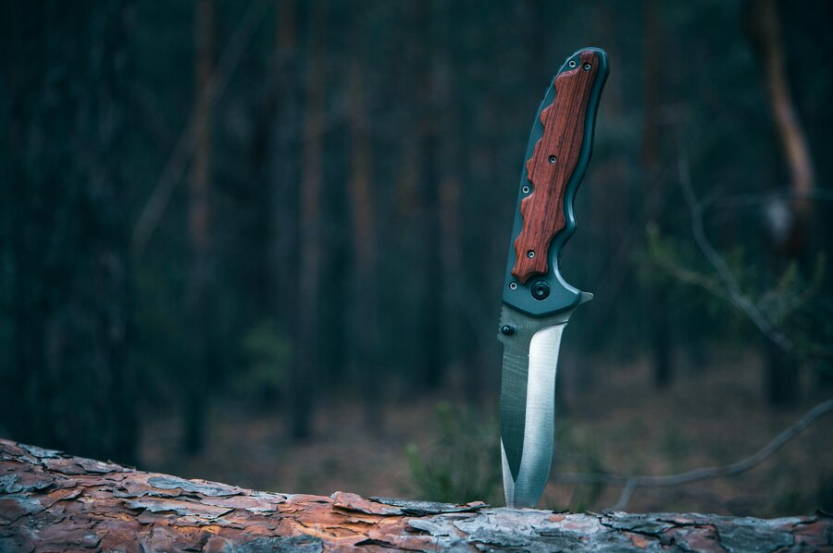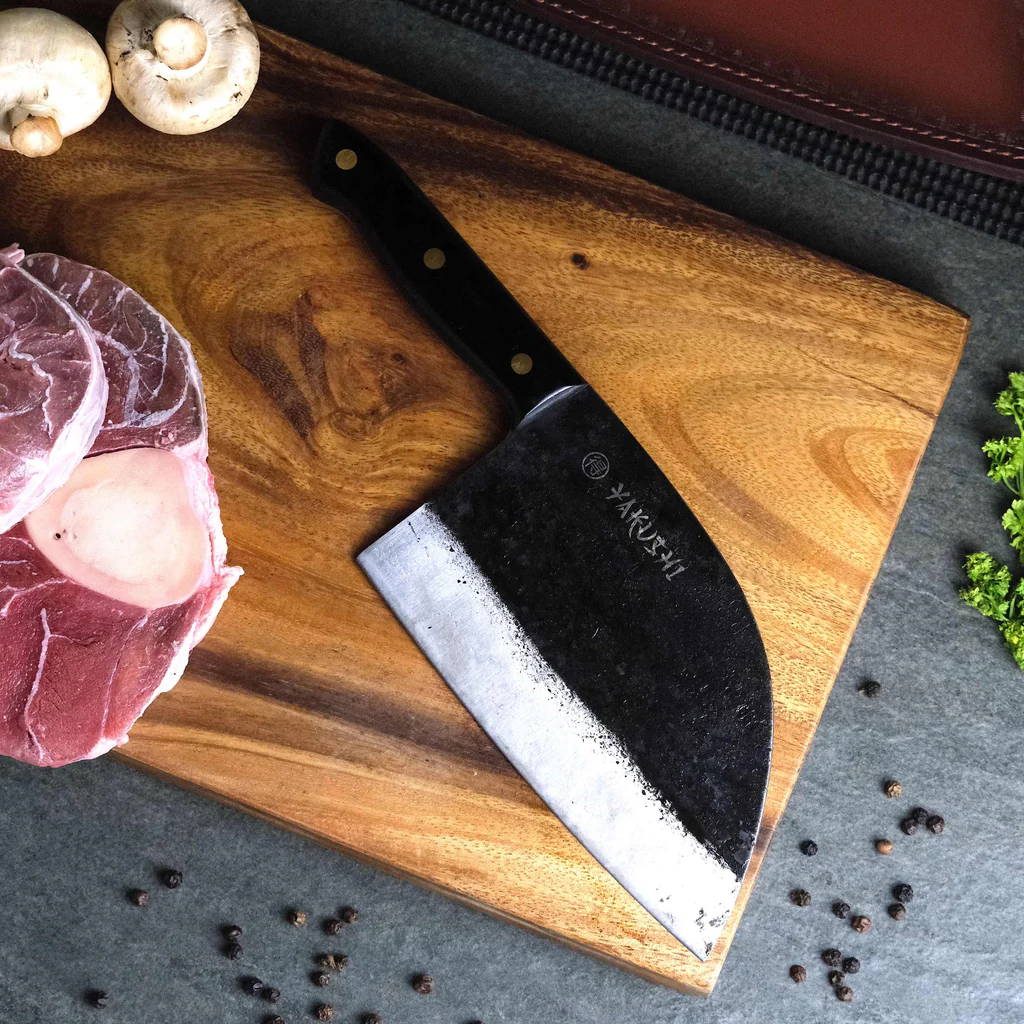From Camping to Cooking:
The Best Outdoor Knives
If you are heading on an outdoor adventure, planning a camping trip, or preparing a hearty meal in the wilderness, it requires a trusty companion: the outdoor knives. Whether you need it to set up a campsite or prepare food outside, having the best outdoor knives is essential. It could be used for various survivalist tasks like cutting branches to make a shelter, slicing through rope, preparing food by chopping and cutting, and more.

However, it is always confusing when picking up perfect outdoor knives, as multiple options are available with different shapes, styles, and sizes. Here, we will explore the different types of outdoor knives, focusing on their role in both camping and cooking activities. We'll also discuss the features and qualities to look for in a good outdoor knife.
Top Outdoor Knives on the Market

Damascus Steel Knife
Damascus steel is a type of high-carbon steel known for its toughness, flexibility, and resistance to chipping and rust. The layered construction of Damascus steel provides exceptional strength and durability, making it suitable for heavy outdoor use such as cutting rope, processing wood, cutting food items, and even constructing makeshift shelters. Their compact nature ensures portability, making them convenient to carry during hiking or foraging trips while camping.
Kiritsuke Knife
Kiritsuke Knife is a type of traditional Japanese chef's knife that is also known as a Gyoto-style knife. The blade of this knife is typically long, thin, and lightweight and is made from high-quality steel. The versatile blade can be used for general utility tasks such as opening packages, cutting rope, and performing cutting and slicing activities. The knife's sharp edge and fine point make it useful for trimming and grafting plants cutting stems and foliage that comes in the way while hiking outdoors.
Butcher Knife
A butcher knife is typically made of high-quality, durable materials such as premium Serbian steel, which offers exceptional strength, rigidity, and resistance to flexing. The knife’s ability to cut through rigid meat and its giant size allows it to perform tough tasks like stabbing tent stakes, cutting ropes & wood, and digging a hole for tent setup.
The ability of the handmade butcher knife to maintain a sharp edge for extended periods further adds to its effectiveness and suitability for outdoor use, where a dependable cutting tool is essential for various tasks.
Hunting Knife
Hunting knife blades are commonly made from high-quality steel, such as stainless steel or carbon steel, to ensure durability, edge retention, and resistance to corrosion. This tool is used during hunting to prepare wildlife for consumption, such as skinning the animal and cutting the meat. Most hunting knives consist of slightly curved blades, and some may have a curved portion for skinning and a straight portion for cutting slices of meat. Most hunting knives designed as "skinners" feature a rounded point to avoid damaging the skin when it is being removed. Furthermore, it can be used to create wood shavings or prepare kindling, which is essential for starting fires in camping or survival situations.
Choosing the Right Outdoor Knives
Consider The Materials
The kind of material used in outdoor knives can really affect how well it works, how sharp it stays, and how long it lasts. Good knives often use high-quality materials like stainless steel or high-carbon steel, and each of them comes with its own strengths. Stainless steel is favored for its durability and resistance to rust, making it a reliable option for outdoor use where exposure to moisture is common. It demands less maintenance and is known for its overall toughness.

On the other hand, high-carbon steel excels in sharpness and edge retention, providing precision cutting for tasks that demand finesse. However, it is more prone to corrosion, requiring constant maintenance to prevent rust.
The decision between these materials depends on individual preferences and the specific requirements of the intended tasks.
Fixed Blades vs Folding Blades
Folding knives include a pin that connects the blade to a hollow handle, allowing it to spin upwards while a locking mechanism holds it in place. On the other hand, a fixed blade features an unsharpened piece below the blade, known as a tang, which is wrapped around the handle.
Since fixed blades are often made of a single piece of steel with no moving elements, they exceed folding knives regarding safety and longevity. A fixed blade will not break unless extreme pressure is applied, avoiding serious accidents and not leaving you with a useless knife.
On the other hand, a folding knife is significantly less durable and has a more limited use. If exposed to high pressure, they risk breaking at the joint between the blade and the handle, allowing the blade to separate from the handle and harm yourself and others, or the locking mechanism can fail, forcing the knife to close shut on your fingers.
The Tang
The tang is the knife's unsharpened section that extends into the handle. It comes in various lengths and shapes, with some extending completely through the handle (full tang construction) while others extend barely halfway. Others, referred to as "rat tails," will go almost the way through the handle but are extremely thin and fragile.
Choose the tang according to how you intend to use the knife. Rat tails are more likely to be seen on low-cost blades and combat and hunting knives designed for stabbing and slicing soft targets. Partial tangs are useful for bushcraft and lighter activities. Higher-end variants, particularly larger blades designed for survival use, may feature a full tang construction.
Conclusion
As we wrap up our exploration of the best knives for the outdoors, it's clear that these tools are indispensable for various adventures, from camping to wilderness cooking. When risking into the wild, the importance of carrying quality knives cannot be overstated, as they become essential companions for a variety of survival tasks. Selecting the right one involves understanding materials, blade types, and construction, and the well-chosen outdoor knife is necessary to enhance the outdoor experience, turning each adventure into a well-equipped journey.



Leave a comment
This site is protected by hCaptcha and the hCaptcha Privacy Policy and Terms of Service apply.